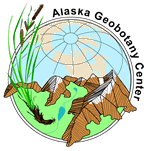
Alaska Geobotany Center, Director
Professional Interests
- Tundra Ecology
- Vegetation Mapping
- Landscape Ecology
- Quantitative Ecology Methods
- Vegetation of Northern Alaska and the Arctic
- Snow Ecology
- Biocomplexity of Patterned Ground
- Landscape Response to Climate Change
- Geographic Information Systems and Remote Sensing
- Disturbance and Recovery of Arctic Ecosystems
Research
- Navigating the New Arctic: Landscape Evolution and Adapting to Change in Ice-rich Permafrost Systems
- How do changes in climate, snow, water, disturbance, and time influence the thawing or stabilization of ground ice? How can Arctic communities plan for and adapt to changes in these evolving permafrost landscapes?
- ArcSEES: Cumulative Effects of Arctic Oil Development — planning and designing for sustainability
- The project seeks a sustainable approach to assessing the cumulative effects of oil exploration through combining detailed ground studies, local community input, industry involvement, and an international perspective.
- Land-Cover Land-Use Change: Examining the interactions between sea-ice, climate, permafrost and social ecology of the Yamal Peninsula, Russia
- A synthesis of remote-sensing studies, ground observations and modeling to understand the social-ecological consequences of climate change and resource development on the Yamal Peninsula, Russia and relevance to the circumpolar Arctic.
- Seasonality of Circumpolar Tundra: Ocean and atmosphere controls and effects on energy and carbon budgets
- A synthetic view of changing seasonality across the land/ocean boundary of the Arctic Ocean.
- Synthesis of Arctic System Science: Greening of the Arctic
- Remote sensing, maps, climate studies and models to address the question of how terrestrial vegetation of the Arctic responds to climate change.
- Greening of the Arctic
- Documenting the rapid and dramatic changes to terrestrial vegetation that are expected to occur across the circumpolar Arctic as a result of climate change is a key goal of the IPY.
- NASA Yamal Project
- The overarching goal of the Yamal portion of the GOA project is to examine how the terrain and anthropogenic factors of reindeer herding and resource development combined with the climate variations on the Yamal Peninsula affect the spatial and temporal patterns of vegetation change and how these changes are in turn affect traditional herding of the indigenous people of the region.
- Toolik-Arctic Geobotanical Atlas
- The Toolik-Arctic Geobotanical Atlas (TAGA) is a web-based multi-scale collection of geobotanical maps and related material that focuses on research sites at the Toolik Field Station and Imnavait Creek, Alaska, but also covers the Kuparuk River Basin, northern Alaska, Arctic Alaska, and the Circumpolar Arctic.
- North American Arctic Transect
- The North American Arctic Transect addresses the Greening of the Arctic (GOA) themes of Current State, Change, and New Frontiers.
- Biocomplexity of Frost Boil Ecosystems
- This project seeks to understand the complex linkages between biogeochemical cycles, vegetation, disturbance, and climate across the full summer temperature gradient in the Arctic in order to better predict ecosystem responses to changing climate.
- Circumpolar Arctic Vegetation Map
- The Circumpolar Arctic Vegetation Map (CAVM) project is an international effort to map the vegetation and associated characteristics of the circumpolar region, using a common base map.
- Arctic Transitions in the Land-Atmosphere System
- This study was part of the Arctic Transitions in the Land-Atmosphere System (ATLAS) project, which studied the large-scale variations in trace-gases, energy, and water.
